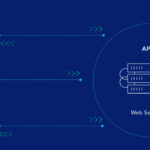In the era where digital presence is not just advantageous but essential, creating a unique and functional website can catapult your business to unprecedented heights.
Identifying Your Business Needs
Assessing Your Target Audience
Understanding the nuanced needs and preferences of your target audience is the cornerstone of developing an effective website. A professional website development company can aid in conducting comprehensive market research, pinpointing the demographic, psychographic, and behavioral attributes of your potential customers. With this information, the foundation for a tailored, audience-centric website is laid.
Determining Your Website’s Purpose
Every website has a distinct purpose, from informational blogs to e-commerce platforms. Defining the precise objectives of your site ensures that the web design agency can craft a platform echoing those goals. Clarity in purpose streamlines the development process, ensuring that every element and feature serves a specific function, enhancing the overall user engagement and experience.
Setting Clear and Achievable Goals
It’s paramount to outline the benchmarks for success. By setting measurable, achievable, and time-bound goals, you can ensure the alignment of the website’s performance with business objectives. It fosters an environment of accountability and precision, laying down a pathway for iterative improvements and sustained growth.
Exploring the World of Web Development
An Overview of Web Development Services
In the intricate landscape of web development, myriad services cater to diverse business needs. From custom coding to content management system (CMS) based designs, the options are plentiful. Expert agencies combine innovative techniques and proven methodologies to deliver websites that are not just visually appealing but robust and scalable.
Latest Trends in Website Design
Keeping abreast with the cutting-edge trends is pivotal. The world of web design is dynamic, with evolving aesthetics and functionalities. Responsive design, AI integration, and interactive elements are transforming the digital landscape, enabling businesses to engage audiences in innovative ways and distinguish themselves in the crowded marketplace.
The Role of User Experience (UX)
User experience is the linchpin of a successful website. It’s not just about the visual appeal but the seamless navigation, intuitive layout, and accessibility that makes a site genuinely engaging. A meticulously crafted UX ensures that every visitor’s journey is personalized, intuitive, and rewarding, fostering loyalty and conversion.
Selecting the Right Web Development Firm
Evaluating the Firm’s Expertise
A potent blend of experience, skill, and innovation defines a capable web development partner. It’s not just about coding prowess but the ability to visualize, conceptualize, and realize a website that encapsulates the essence of your brand and resonates with the target audience. Their expertise should be demonstrable, grounded in successful projects and happy clients.
Reviewing Past Projects and Client Feedback
Before you finalize your decision, delving into the firm’s past projects and client feedback is essential. Each project unfolds a narrative of their technical acumen, creativity, and reliability. Client testimonials and case studies offer insights into their work ethic, professionalism, and the tangible value they have added to businesses akin to yours.
Considering the Cost and Value
The financial investment in website development should be weighed against the projected ROI. While cost is a significant factor, the value proposition, the quality of work, and the potential of the website to elevate your digital presence and profitability should be at the core of your evaluation process.
Navigating the Development Process
The Initial Consultation and Planning
Embarking on the development journey begins with in-depth consultation and meticulous planning. It’s a phase of brainstorming, where ideas meet strategy, and the blueprint of your website starts taking shape. Every feature, functionality, and aesthetic element is plotted, ensuring alignment with the overarching business goals and audience expectations.
Design, Development, and Testing Phases
The progression from the conceptual framework to a functional website is marked by iterative design, rigorous development, and comprehensive testing. Each phase is instrumental, with experts laboring over details to ensure the site’s performance, security, and aesthetic align perfectly. Testing ensures every bug is fixed, every performance issue addressed before the grand launch.
Launching and Maintaining Your Website
The launch is just the beginning. A website is a dynamic entity, requiring constant nurturing. Post-launch, the focus shifts to maintenance, updates, and iterative improvements. Monitoring performance metrics, user feedback, and evolving business needs ensures the site remains relevant, engaging, and aligned with the shifting digital landscape.
Maximizing the Impact of Your Business Website
Integrating Digital Marketing Strategies
Your website is the cornerstone of your digital marketing ecosystem. Integrating SEO, content marketing, social media, and other digital strategies ensure that your site is not just visible but magnetic. It pulls in traffic, engages visitors, and converts leads, amplifying your digital footprint and business profitability.
Analyzing and Improving Website Performance
Analytic tools and performance metrics are your compass in the digital world. They unveil the strengths and weaknesses of your website, offering insights that fuel improvements. Constant analysis and iterative enhancements ensure your site is optimized, responsive, and ahead of the curve, offering users an unmatched experience.
Adapting to Future Business Needs and Trends
The digital landscape is ever-evolving. Adapting to emerging trends, technological innovations, and shifting consumer preferences is pivotal. Your website should be scalable, flexible, and ready to morph, echoing the shifts in the digital arena, ensuring that your business remains at the forefront, competitive, and relevant in a world marked by change.









